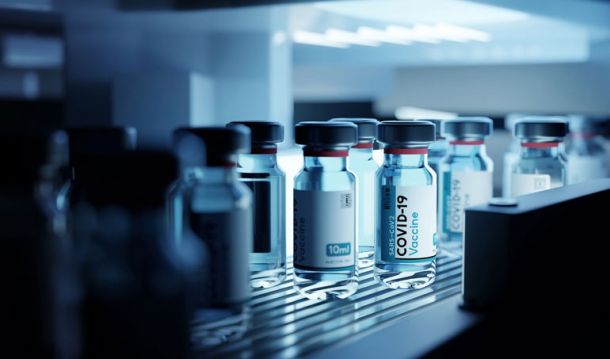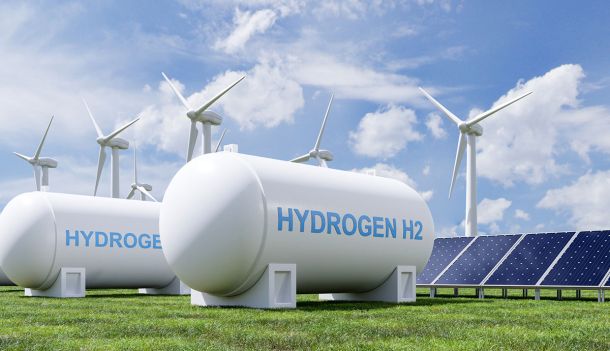INCONCRETO NEWS
From Capacity to Capability: How China Built a World-Class Biotech Pipeline
The Harvard Belfer Center’s Critical and Emerging Technologies Index 2025 recently showed that biotech is the sector where China has the closest opportunity to overtake the U.S., propelled by four pillars: genetic engineering, vaccine R&D, pharmaceutical production, and human capital.
Evidence confirms that power in this domain now depends on building innovation systems that scale. As we previously illustrated on LinkedIn, for the U.S., the challenge lies in brilliant science fragmented by weak strategic coordination, while Europe risks becoming a subcontractor unless it streamlines regulation and investment.
With such a strategic scene set, how has China’s biotech sector evolved from generic manufacturing to original therapies?
The Industry: From Generics to a Growing Ambition
Just a few years ago, the picture of China’s biotech landscape – and the broader pharmaceutical industry in particular – was described as infrastructure-heavy but pipeline-light. Labs were built, factories multiplied, and state subsidies flowed, but critics argued the scientific base to feed those facilities lagged behind. In short: capacity without creativity.
As of 2019, most Chinese drug makers reinvested less than 5% of their revenue into R&D — compared to up to 50% in Western firms — underscoring how far China remained from building the ability to drive innovation in the biotech sector.
The contrast with the U.S. and Europe was stark: 4,441 Chinese firms, yet most resembled bulk producers or API suppliers rather than research-driven biotech companies.
Regulatory hurdles, corruption scandals, and a fragmented healthcare delivery system reinforced the perception of a generics-dominated industry with uneven quality and limited innovation. Moreover, many early Chinese biotech firms relied on a simple strategy: licensing drugs already approved in the West but not available domestically. While China’s large patient population made trial recruitment easy, the lack of trial expertise created bottlenecks.
This framing shaped global expectations: China might dominate production, but would struggle to compete in the high-stakes world of biotech discovery.
An Integrated Ecosystem as a Turning Point
The perception began to change with a series of structural reforms, whose results became rapidly visible. Since 2015, Beijing has actively aligned its system with international standards demonstrating that a shift toward developing original biotech therapies was underway.
Under the “Made in China 2025” strategy, the government explicitly identified biotech innovation as a pillar of national competitiveness. The China Food and Drug Administration (now National Medical Products Administration – NMPA) introduced fast-track reviews, conditional approvals, and priority pathways for drugs targeting unmet medical needs. At the same time, the requirement to repeat clinical trials exclusively in Chinese state labs was lifted, opening the door to global collaboration. Complementary policies, such as the 2015 State Council Opinions on Reforming Drug and Device Review and the 2016 Healthy China 2030 initiative, emphasized innovation, market access, and health system modernization.
Over time, generics producers faced tighter quality standards, discouraging the flood of “copycat” approvals. Backlogs in drug registration shrank from years to months, while approval times for foreign firms also fell sharply between 2012 and 2021.
The new paradigm did more than cut red tape. By raising quality standards and rewarding speed to market for novel drugs, they reoriented incentives across the sector. Firms now had to invest in genuine biotech R&D to stay competitive, moving the industry’s trajectory to modernisation.
To support ecosystem development, China established ten biopharma innovation hubs, with key clusters in the Yangtze River Delta, Beijing-Tianjin-Hebei, and the Greater Bay Area, fostering collaboration between industry, academia, and government.
Talent programs, including the Thousand Talents Initiative to bring back Chinese leading scientists working abroad, strengthened workforce capacity and practical skills.
The COVID-19 pandemic served as a stress test for these advancements. Chinese biotech firms adapted relatively quickly, redirecting resources into vaccine development and demonstrating improved reactivity to respond to global health emergencies. Companies like Abogen Biosciences and Walvax Biotechnology advanced mRNA vaccine candidates, with Walvax’s gaining domestic approval in 2022. The sector was moving beyond a narrow focus on generics.
China is also allocating massive investments into AI-driven biotech, with Shanghai expected to become a “globally influential” centre for medical AI before 2027. Startups like XtalPi, Viva Biotech, and Insilico Medicine are using machine learning, molecular modelling, and generative algorithms to propose drug candidates, shorten discovery timelines, and reduce failure rates. In June 2025, AstraZeneca inked a $5.2 billion collaboration with China’s CSPC to co-develop chronic disease therapies using AI tools. These developments are active components of China’s biotech infrastructure, reinforcing reform momentum with computational capacity, data scale, and a continuous stream of novel candidates.
The overall policy signal is clear: innovation, not imitation.
Thousands of small generics producers were under pressure to merge or exit, as regulatory reforms raised quality standards and shifted incentives toward original drug development. By the early 2020s, leading firms like Hengrui Pharmaceuticals were consistently channelling more than one-fifth of revenue into R&D, which is far above the historical Chinese average and approaching levels seen in global innovation leaders.
In a very limited span of time, what was once dismissed as a generics-heavy, fragmented sector began its transformation into a system capable of producing and scaling original biotech innovation.
Global Pharma Betting on China: R&D and Licensing Deals
The reforms and ecosystem upgrades in China have not gone unnoticed by global pharmaceutical giants. Leading firms are increasingly placing strategic bets on the country’s biotech capabilities, signalling confidence in its maturing innovation landscape.
- Sanofi: The group is accelerating its R&D investment in China. It has built four R&D sites in China and established the Sanofi Institute for Biomedical Research in Suzhou focusing on cutting-edge biology. The company announced plans to introduce over 25 innovative products between 2020 and 2025 in areas such as rare diseases, oncology, and vaccines. Sanofi also highlights that by end-2021 China was included in more of its early-stage global R&D programs than ever before, reflecting growing integration of its Chinese R&D network.
- AstraZeneca. In March 2025, the company announced a new investment of $2.5 billion in a R&D hub in Beijing to bolster its business in China, its second-largest market. CEO Pascal Soriot emphasized the company’s dedication to China, highlighting investment plans, licensing deals with Chinese companies, and a joint venture for vaccines. The new R&D centre will collaborate with Beijing’s life sciences ecosystem and complement another site in Shanghai.
- Pfizer. In May 2025 the group entered into a significant licensing agreement with Chinese biopharmaceutical company 3SBio Inc for an experimental cancer drug candidate, SSGJ-707. Under the deal, Pfizer will pay $1.25 billion upfront and potentially up to an additional $4.8 billion based on the achievement of development milestones. Additionally, Pfizer plans to invest $100 million in 3SBio through an equity stake once the transaction is finalized by the end of the year.
- Novartis. In September 2025, the company entered into a licensing deal with China-based Argo Biopharma to develop RNA medicines for cardiovascular disease. Argo is set to receive $160 million up front, and Novartis will also participate in Argo’s next funding round. Beyond this latest agreement, Novartis has formed multiple previous alliances with Chinese biotech firms — including Chengdu Baiyu Pharmaceutical, Legend Biotech, and BeOne Medicines — underscoring its ongoing strategy of local partnerships to access innovation.
These international bets underscore the global integration of China’s biotech sector, confirming that all novelties (from fast-track regulatory pathways to the development of innovation hubs and talent programs) are yielding measurable results. By embedding themselves within Chinese R&D networks, global companies gain early access to novel therapies while contributing expertise and capital to an ecosystem increasingly capable of producing world-class biotech.
The rising volume of cross-border collaborations sets the stage for the next phase: beyond scaling innovative therapies locally, to position China as a key player in advanced modalities like cell and gene therapies.
Deepening the Pipeline: The Case of Cell and Gene Therapies
Beyond expanding general clinical trial capacity, domestic firms are now advancing into areas once dominated by Western leaders, including cell and gene therapies (CGT). These therapies exemplify the sector’s growing scientific sophistication and pipeline depth.
By investing in talent, infrastructure, and regulatory modernization, the country is creating an ecosystem capable of not just conducting trials, but designing, developing, and scaling next-generation biologics that could compete on the global stage.
As of August 2024, the country had registered 2,794 CGT clinical trials, with a significant focus on immune cell therapies, particularly CAR-T cells, which constituted 46.9% of them.
Key players such as Grit Biotechnology and Gritgen Therapeutics are at the forefront of this transformation. Grit Biotechnology’s GT101, a non-gene-modified tumor-infiltrating lymphocyte (TIL) therapy, has received Investigational New Drug (IND) approval in China and is currently undergoing Phase 1 clinical trials. Gritgen Therapeutics is advancing gene therapies for hemophilia A, with a Phase 1 trial underway.
The NMPA has played a pivotal role by streamlining approval processes and introducing accelerated pathways for innovative therapies. In 2023, China approved 87 novel drugs, with a significant proportion being targeted therapies, reflecting a shift towards precision medicine. This regulatory support has been instrumental in facilitating the advancement of CGT products.
International recognition of China’s CGT capabilities is evident, with companies like AccurEdit Therapeutics receiving in 2025 the U.S. FDA’s Regenerative Medicine Advanced Therapy (RMAT) designation for their gene editing product ART001, marking a significant milestone for Chinese biotech on the global stage.
Despite these advancements, it is worth noting that challenges persist, including an 83% drop in investment in 2023, and tightened NMPA oversight of gene editing.
Yet, China’s CGT landscape remains dynamic and poised for growth.
INCONCRETO’s Strategic Vision
Biotech is more than ever a driver of economic strength, public health, and global technological influence. Its ecosystem spans research, regulation, talent, and manufacturing, requiring a coordinated strategy that goes beyond individual breakthroughs.
At INCONCRETO, we help organizations design and scale biotech innovation systems that are robust, integrated, and future-ready. By connecting policy, industrial capabilities, and scientific expertise, we transform fragmented efforts into cohesive, high-impact programs. In a sector where speed alone is not enough, success comes from foresight, alignment, and execution. Our approach ensures that innovation is not only generated but systematically deployed, creating sustainable value for companies, governments, and society at large.
For further reading, you may consult these sources:
- Critical and Emerging Technologies Index, by The Harvard Belfer Center
- The next biotech superpower, by Nature
- Betting big on biotech, by South China Morning Post
- How China is pulling ahead on AI and biotech, by Axios
- Is China the future of biotech?, by Labiotech
- Lab leader, market ascender: China’s rise in biotechnology, by Metrics
- China Leads in AI-Driven Drug Discovery Patents, Signaling Pharmaceutical Innovation Boom, by DrugPatentWatch
- China’s cell therapy sector: a beacon of opportunity in 2024, by Intralink
Newsletter
© INCONCRETO. All rights reserved. Powered by AYM



















































